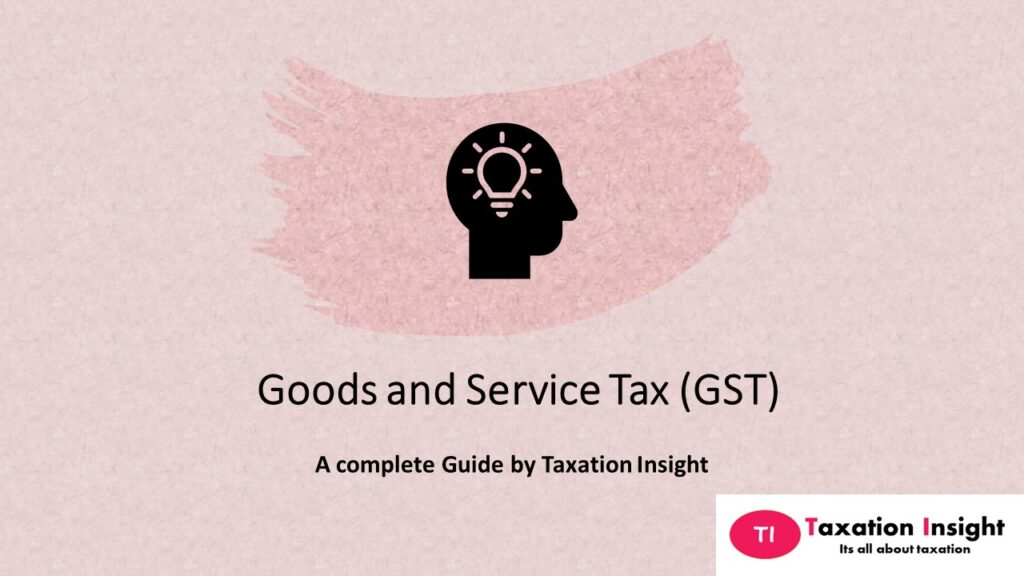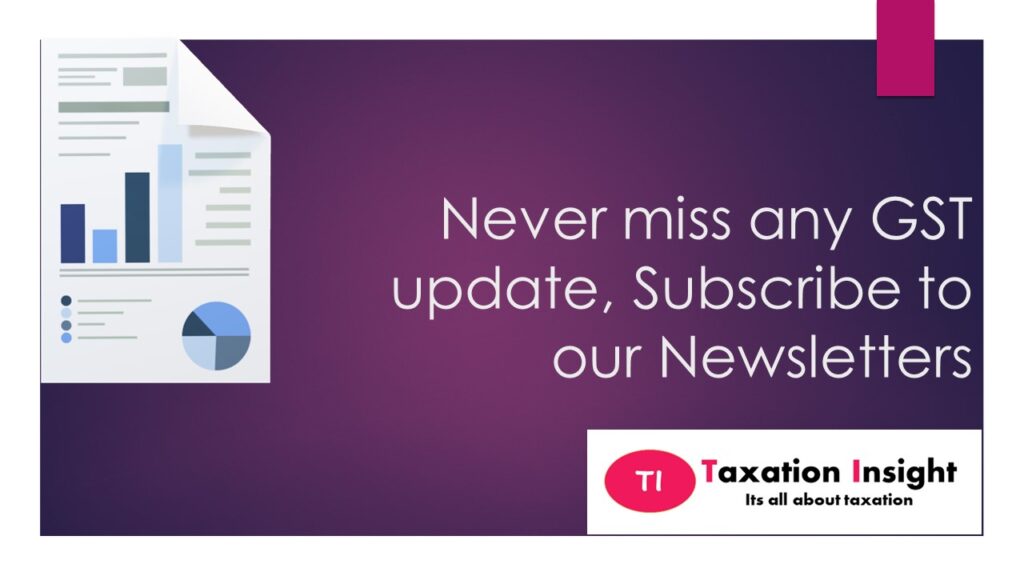GST
Goods and Services Tax (GST)- A Complete Guide

Brief History of Goods and Services Tax (GST)
The idea of introducing the GST in India was first mooted by Union Finance Minister in his Budget Speech for 2006-07 and initially, it was proposed to be introduced effective from 1st April 2010. The Empowered Committee of State Finance Ministers (EC) which had formulated the design of State VAT was requested to come up with road map and structure for GST. Based upon several discussions within and between Central Government, EC released its First Discussion Paper on GST in November, 2009. This spelled out features of the proposed GST and also formed the basis for discussion between the Centre and the State so far.
Introduction to GST is one of the major reforms by the Indian Government toward indirect tax reform which is in line with the Global Standard VAT structure. France is the first country to introduce VAT in their country in the year 1954 and so far more estimated 160 countries across the globe have adopted this system in their respective countries.
The GST framework is a dual structure in nature in India, as India is a Federal country where both Central Government as well State governments have the power to levy taxes and GST subsumed various Central as well State Government taxes into a Single Tax, further it also mitigate ill-effects of Cascading or Double Taxation. From a consumer point of view, GST brings a major tax advantage by reducing the overall tax burden on the ultimate consumer, by allowing tax credits at various stages, starting from the Manufacturing of Products to their ultimate consumption by the consumer.
How GST is introduced in India
As India is an Federal country and fiscal powers between Centre and State is clearly demarcated in the constitution with almost no overlap between the respective domains. The Centre has exclusive power to levy taxes on manufacture of Goods (Except manufacturing of Alcoholic Liquor for Human Consumption, opium, narcotics etc.) while State has power to levy taxes on sale of goods. In case of Inter-state sales of goods, Centre has exclusive right to levy taxes, but its collection and its retention is entirely by State Government.
For services, it is the Centre alone that is empowered to levy Service Tax. Since the States are not empowered to levy any tax on the sale or purchase of goods in the course of their importation into or exportations from India, the Centre levies and collects this tax in addition to the Basic Customs Duty. This additional duty of customs (commonly known as CVD and SAD) counterbalance excise duty, sales tax, State VAT and other taxes levied on the like domestic product. Introduction of GST required amendments in the Constitution so as to empower the Centre and the States concurrently to levy and collect GST.
GST is an Tax which is levied by both Centre and State Government, and in order to give concurrent powers to both Centre and State Government to levy GST and also give join powers for GST structure, design, and operation of GST, there is an requirement to amend constitution, thus, Constitution (122nd Amendment) Bill was introduced in the 16th Lok Sabha on 19.12.2014.
The Bill provides for a levy of GST on supply of all goods or services except alcohol for human consumption. The tax shall be levied as Dual GST separately, but concurrently the Union (CGST) and the States (SGST). The Parliament would have exclusive power to levy GST (IGST) on inter state trade or commerce (including imports) in goods and services. The Central Government will have the power to levy excise duty in addition to GST, on tobacco and tobacco products.
The constitution Amendment Bill was passed by the Lok Sabha in May, 2015. The Bill with certain amendments was finally passed in the Rajya Sabha and thereafter by the Lok Sabha in August, 2016. Further, the Bill has been ratified by the required number of States and has since received the assent of the President on 8th September,2016 and has been enacted as the 101st Constitution Amendment Act, 2016. The GST Council has also been notified w.e.f. 12th September,2016. GST Council is being assisted by a Secretariat.
The Goods and Service Tax Council (hereinafter referred to as, “GSTC”) comprises of the Union Finance Minister, the Minister of State(Revenue) and the State Finance Ministers to recommend on the GST rate, exemption and thresholds, taxes to be subsumed and other matters. One-half of the total number of members of GSTC form quorum in meetings of GSTC. Decision in GSTC are taken by a majority of not less than three-fourth of weighted votes cast. Centre has one-third weightage of the total votes cast and all the states taken together have two-third of weightage of the total votes cast.
All decisions taken by the GST Council has been arrived at through consensus. The option of exercising a vote has not been resorted to till date.
To ensure smooth roll-out of the GST, various Committees and Sectoral groups has been formed comprising of members from both Centre and States.
Silent Features of GST
- GST is levied on Supply of Goods and/or Services unlike previous tax structure, where tax was levied on different taxable event like, manufacture of goods, sale of goods, provision of services etc.
- GST is an Destination-based tax, where GST revenue would accrue to consumption state i.e. State where Goods or services is ultimately consumed, unlike previous tax structure which is levied on Origin basis.
- GST is an Dual tax in nature where both Centre as well State Government, both charge Taxes on single transaction. Centre Government charges CGST and State Government charges SGST and Union territories charges UTGST.
- An Integrated GST (IGST) would be charged by Centre on Inter-state supply of Goods or Services
Taxes Subsumed in GST
Central Taxes that is subsumed in GST
- Central Excise Duty
- Duties of Excise (Medicinal and Toilet Preparations)
- Additional Duties of Excise (Goods of Special Importance)
- Additional Duties of Excise (Textiles and Textile Products)
- Additional Duties of Customs (commonly known as CVD)
- Special Additional Duty of Customs(SAD)
- Service Tax
- Cesses and surcharge in so far as they relate to supply of goods and services.
State Taxes that is subsumed within GST are
- State VAT
- Central State Tax
- Purchase Tax
- Luxury Tax
- Entry Taxes
- Entertainment Tax and Amusement Tax (except those levied by the local bodies)
- Taxes on advertisements
- Taxes on lotteries, betting and gambling
- State cesses and surcharges in so far as they relate to supply of goods and services
How credit of GST paid on Purchases is allowed to be adjusted
- Credit of IGST shall be adjusted against Output IGST Liability and if any balance is left, then it can be adjusted with CGST and SGST/UTGST Liability in any order.
- Credit of CGST shall be first adjusted against CGST Liability and if any balance is left, then it can be adjusted with IGST liability.
- Credit of SGST/UTGST shall be first adjusted against SGST/UTSGT Liability as the case maybe and if any balance is left, then it can be adjusted with IGST liability.
- Credit of SGST/UTGST cannot be adjusted against liability of CGST or vice-versa, it means, no cross credit of CGST and SGST/UTGST shall be allowed.
Subscribe to our Newsletters and stay updated

